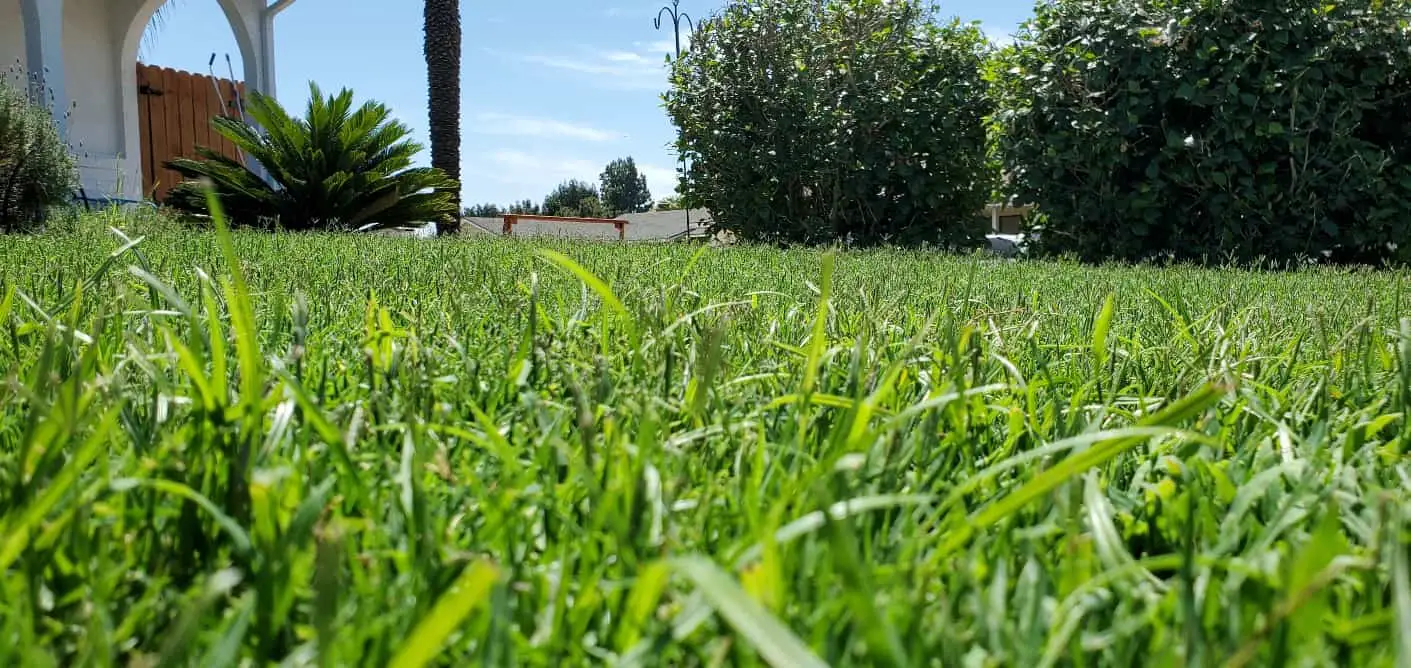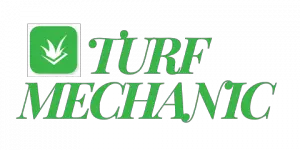
Yellow and purple nutsedge are technically not grasses, they are graminoids or grass-like plants that flower which fall under the sedge family. Although there are some reasons to grow certain types of sedges for the edible tubers found underground or for their ornamental attributes, the most common sedges found in residential lawns are well known to be some of the world’s most problematic weeds.
In many locations these weeds are classified as invasive meaning it’s particularly important to do what we can to control their spread.
The best way to control yellow and purple nutsedge in the lawn is to apply Halosulfuron to it in the late Spring through the mid summer when the above ground shoots are well developed. If herbicides are applied later in the summer or in the early Fall when the plants are trying to send out seed heads the application will be less effective.
The simplest Halosulfuron to buy and apply is this stuff, Halo Select, which comes in 1000 square foot increment packets. It’s a cheaper alternative to the well known Sedgehammer brand that uses the same active ingredient.
There are however a few other products that can be used depending on the turf grass variety the sedges are growing in and depending on which type of nutsedge plant is in the lawn. I’ll describe these other options in a bit more detail.
Yellow nutsedge can be killed or at least managed with Mesotrione which is found in a variety of products, most notably Tenacity. Tenacity is not a product that can be used on all lawns though. If you run Bermuda, Zoysia, Fine Fescue, or Bentgrass then this shouldn’t be considered an option for you.
Sulfentrazone can also be used to kill nutsedge in cool season grasses, but even this option can cause some damage to certain varieties of Tall Fescue so it may not be worth using if you run an elite fescue cultivar.
Nutsedge Killers That I Recommend
Halosulfuron
I use Empero Halosulfuron that I mix myself in my spray tank with my own surfactant. The bottle is bigger so it lasts longer for me in case I need to make multiple applications making it cheaper for regular use or for big yards.
For simplicity or for small yards the Sedgehammer+ product is perfect. The product comes in small packets that cover 1000 square feet each and you can buy only a few packets if you don’t need a lot. The + in Sedgehammer Plus mean the surfactant is already included so you don’t have to add that to the tank separately.
Sulfentrazone
For small patches of sedges in the lawn or occasional spot use the basic hose-end Ortho Nutsedge killer works great and doesn’t cost much. It can usually be found at local stores for convenience but can also be purchased online.
For larger infestations of nutsedge in cool season lawns I recommend using straight Sulfentrazone (brand name is Dismiss) and mixing it yourself. Buy it all by itself and you’ll have plenty leftover for future battles with sedges because they always seem to try to reappear season after season even after it looks like you’ve killed all the sedges out of your lawn.
Mesotrione
You can get Mesotrione in a bag of Scott’s starter fertilizer so if you have yellow nutsedge in a lawn being overseeded then Spreading Scott’s Built For Seeding will help fertilize the new grass, stave off new weed germination in the Fall, and kill of some of the sedges all at the same time.
For better coverage or for situations where you don’t want or need to add the extra fertilizer then you can’t go wrong with a bottle of Tenacity. You will probably use it more often than you realize if you buy one.
Sometimes the generic Meso products are cheaper than Tenacity but not by much. This generic Mesotrione from Liquid Harvest is what I’d buy next if I didn’t want to pay for the Tenacity label.
What Does Nutsedge Look Like?
These tufted grass-like plants are often called nutgrass or sedge-grass; they grow in wet, marshy soils or well irrigated lawns and are recognized by their triangular stems and inconspicuous flowers.
Once nutsedge gets into your lawn, it is difficult to control because of its extensive root system. Nutsedge roots grow 8 to 14-inches down into the soil and form tiny tubers or nutlets. These nutlets are how nutsedge reproduces, along with its rhizomes and seeds, and are why nutsedge is hard to control. A heavy nutgrass population can take more than one season to eradicate from your lawn.
Therefore, the best way to stop nutsedge in your lawn is to prevent it from taking hold in your grass in the first place or getting rid of it quickly once it’s noticed. It’s much easier to focus on prevention rather than trying to eradicate it once it’s out of control.
Here is a video I made for the full purpose of explaining what lawn sedge weeds look like both above ground and below ground.
If you think you have a different kind of grassy weed that just looks a bit like nutsedge then take a look at Certainty for warm season lawns or Fluasifop for cool season lawns…or just spot treat with a non selective herbicide like glyphosate and reseed the patch on the same day.
If you’d like to learn a ton more about lawn care then consider buying full access to all of my premium lawn courses over at TurfMechanicPremium.com.
Simple Tips To Control Nutsedge’s Establishment In A Lawn
1. Prevent Nutsedge Seed Germination – Apply a preemergent product to the lawn early in the spring before nutsedge seeds germinate.
2. Maintain a healthy lawn – Test your soil for pH and nutrient content and apply fertilizers and other amendments based upon the test recommendations to provide optimal nutrient content.
3. Water Deep & Infrequently – Water lawns only when moisture is needed to prevent over-watering. Water infrequently, giving the grass more water in a single event, instead of watering a little bit every day.
4. Improve Soil Aeration – Aerate and/or dethatch your lawn routinely to improve soil drainage and the movement of water, air, and nutrients through the root zone.
5. Mow grass at the recommended height – Routine lawn mowing at standard heights will support thick turf and make it harder for sedges to infiltrate your lawn.
6. Insect Control & Prevention – Manage nuisance insects and disease problems to prevent thin or bare spots in the lawn.
7. Physically Remove Young Sedge Plants – Identify young plants and pull (or dig) them out before they start forming tubers.
8. Maintain & Clean Your Equipment – Thoroughly clean tools and equipment (rototiller, tractor tires, shovels) after they are used in infested areas to avoid transferring small pieces of the tubers and rhizomes to your lawn.
9. Only Buy Products From High Quality Sources – Check any incoming products to make sure you aren’t unknowingly bringing tubers into your yard. The most common culprits are potting soil, fill dirt, mulch, and container plants.
Herbicides can be used but should be turned to as a last resort. These weed-killing chemicals don’t effectively control mature nutsedge or tubers, and they only have a limited effect on young nutsedge plants. If you opt to use an herbicide, make sure to choose a product suited for the type of nutsedge in your lawn (yellow or purple), and follow the label directions carefully.
Lastly, to get timely reminders and tips throughout the lawn season make sure to sign up for my weekly emails here. Thanks!
